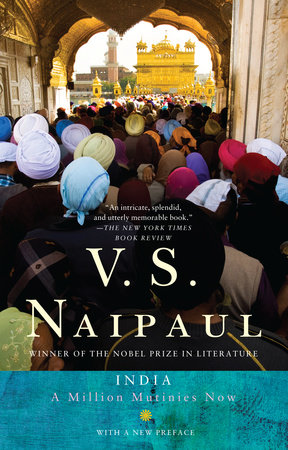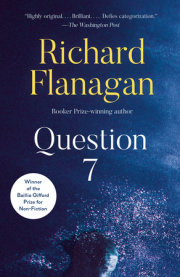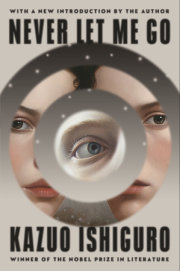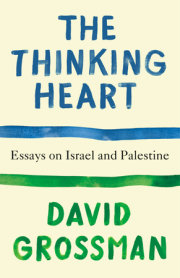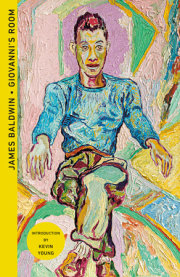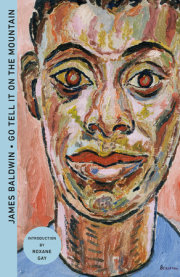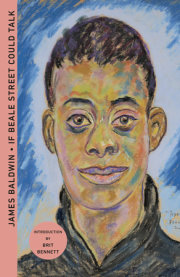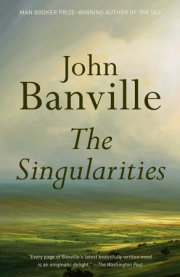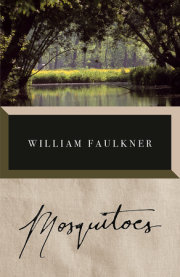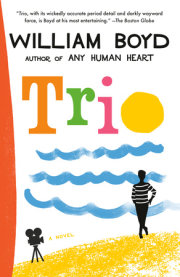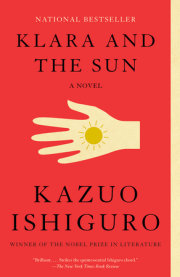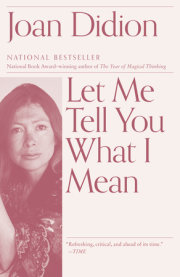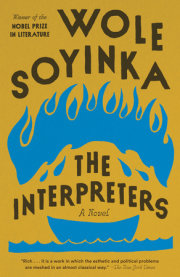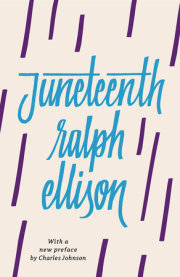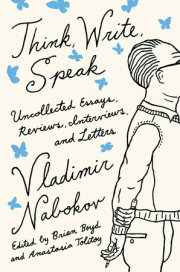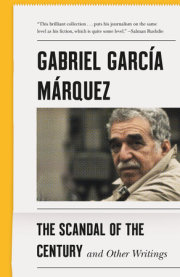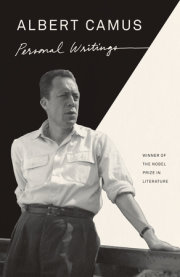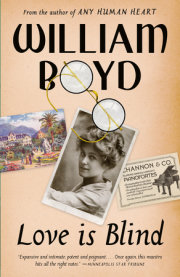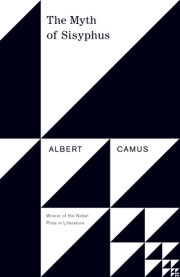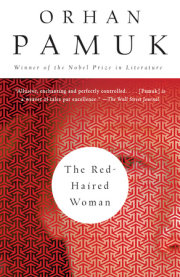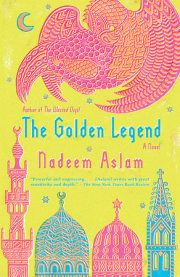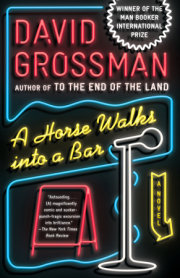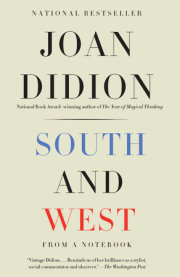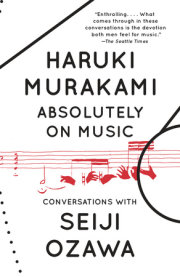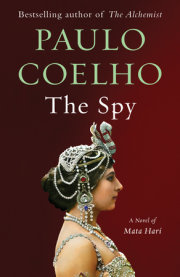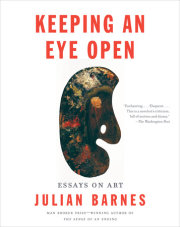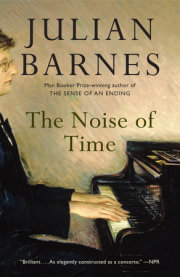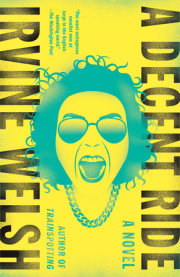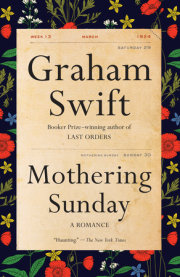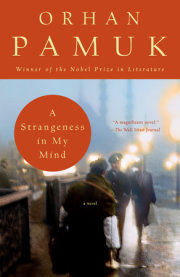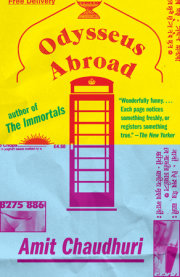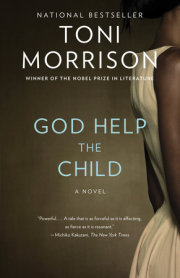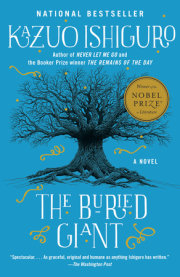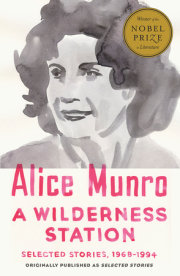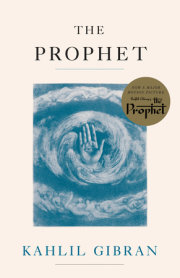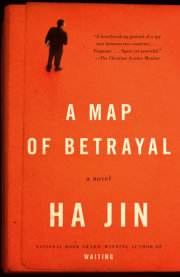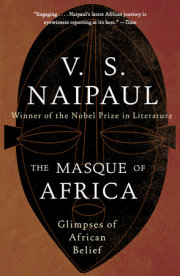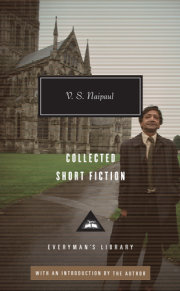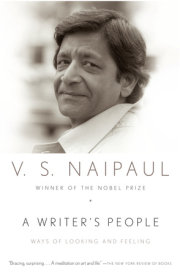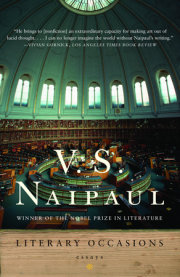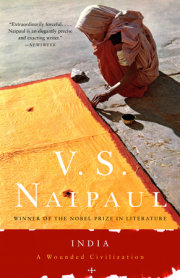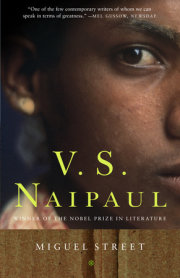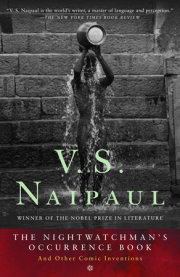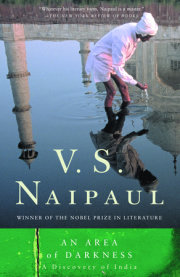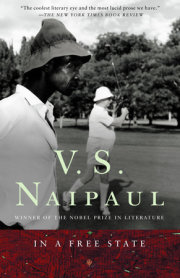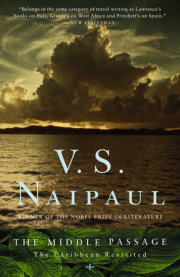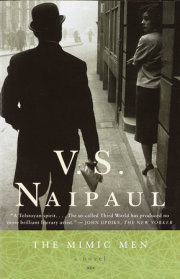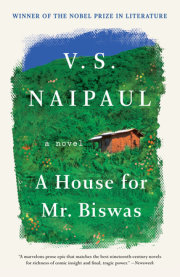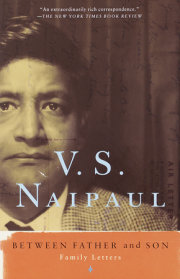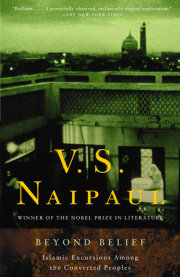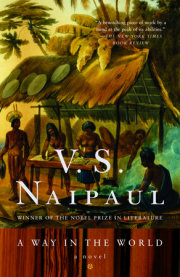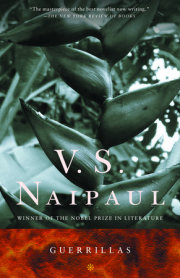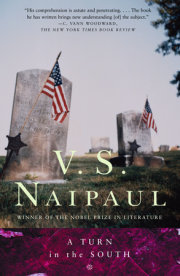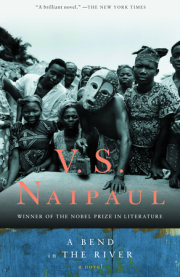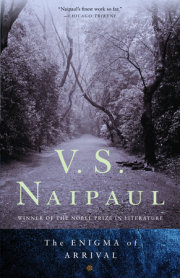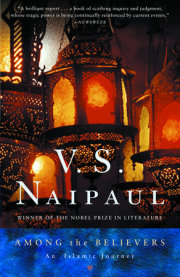I
Bombay is a crowd. But I began to feel, when I was some way into the city from the airport that morning, that the crowd on the pavement and the road was very great, and that something unusual might be happening.
Traffic into the city moved slowly because of the crowd. When at certain intersections the traffic was halted, by lights or by policemen or by the two together, the pavements seethed the more, and such a torrent of people swept across the road, in such a bouncing froth of light-coloured lightweight clothes, it seemed that some kind of invisible sluice-gate had been opened, and that if it wasn't closed again the flow of road-crossers would spread everywhere, and the beaten-up red buses and yellow-and-black taxis would be quite becalmed, each at the centre of a human eddy.
With me, in the taxi, were fumes and heat and din. The sun burned; there was little air; the grit from the bus exhausts began to stick to my skin. It would have been worse for the people on the road and the pavements. But many of them seemed freshly bathed, with fresh puja marks on their foreheads; many of them seemed to be in their best clothes: Bombay people celebrating an important new day, perhaps.
I asked the driver whether it was a public holiday. He didn't understand my question, and I let it be.
Bombay continued to define itself: Bombay flats on either side of the road now, concrete buildings mildewed at their upper levels by the Bombay weather, excessive sun, excessive rain, excessive heat; grimy at the lower levels, as if from the crowds at pavement level, and as if that human grime was working its way up, tide-mark by tide-mark, to meet the mildew.
The shops, even when small, even when dingy, had big, bright signboards, many-coloured, inventive, accomplished, the work of men with a feeling for both Roman and Sanskrit (or Devanagari) letters. Often, in front of these shops, and below those signboards, was just dirt; from time to time depressed-looking, dark people could be seen sitting down on this dirt and eating, indifferent to everything but their food.
There were big film posters on billboards, and smaller ones repeating on lamp-posts. It was hard, just at this moment of arrival, to relate the romance the posters promised to the people on the ground. And harder to place the English-language advertisements for banks and airlines and the Times of India Sesquicentennial ('Good Times, Sad Times, Changing Times'): to the stranger just arrived after a night flight, the city suggested by those advertisements was like an almost unimaginable distillation -a special, rich liquor -of the humanity that was on view.
The crowd continued. And then I saw that a good part of this crowd was a long queue or line of people, three or four or five deep, on the other pavement. The line was being added to all the time; and though for stretches it appeared to be standing still, it was moving very slowly. I realised I had been driving past the line for some time; perhaps, then, the line was already a mile long. The line was broken at road intersections: policemen in khaki uniforms were keeping the side roads clear.
What were these people waiting for? What was their chance of getting what they wanted? They seemed peaceable and content, even in the sun and the brown smoke of exhausts. They were in good clothes, simple, Indian-style clothes. People joining the line came almost at a trot; then they became patient; they seemed prepared to wait a long time. I had missed the beginning of the line. I didn't know what lay there. A circus? I believe there had been posters for a circus earlier on the road. An appearance by film stars? But the people in the line didn't show that kind of eagerness. They were small, dark, patient people, serious, and in their best clothes; and it came back to me that somewhere along the line earlier there had been flags and emblems of some sort.
I was told, when I got to the hotel in downtown Bombay, that there was no public holiday that day. And though the crowd had seemed to me great, and the line quite remarkable, something the newspapers might have mentioned, the hotel people I spoke to couldn't tell me what the line might have been for. What had been a big event for so many thousands somewhere in mid-town Bombay had sent no ripple here.
I telephoned an acquaintance, a writer. He knew as little as the hotel people. He said he hadn't been out that morning; he had been at home, writing an article for Debonair. Later, when he had finished his article, he telephoned me. He said he had two theories. The first theory was that the people I had seen might have been lining up for telephone directories. There had been trouble about the delivery of new directories—Bombay was Bombay. The second theory was something he had had from his servant woman. She had come in after I had telephoned, and she had told him that that day was the birthday of Dr Ambedkar, and that there was a big celebration in the suburb I had passed on my way from the airport.
Dr Ambedkar had been the great leader of the people once known in India as the untouchables. He had been more important to them than Mahatma Gandhi. In his time he had known honour and power; he had been law minister in the first government of independent India, and he had drafted the Indian constitution; but he had remained embittered to the end. It was Dr Ambedkar who had encouraged the untouchables -the harijans, the children of God, as Gandhi called them, and now the Dalits, as they called themselves—to abandon Hinduism, which had enslaved them, and to turn to Buddhism. Before his thought could change or develop, he died, in 1956.
No leader of comparable authority or esteem had risen among the castes for whom Dr Ambedkar spoke. He had remained their leader, the man they honoured above all others; he was almost their deity. In every Dalit house, I had been told, there was a photograph of Dr Ambedkar. It was a photograph I had seen many times, and it was strange that a better photograph hadn't been used. The Ambedkar icon was like a grey passport photograph reproduced in an old-fashioned newspaper process: the leader reduced to a composition of black and white dots, frozen in an image of the 1940S or 1950S, a plumpish man of unmemorable features, with the glasses of a student, and in the semi-colonial respectability of jacket and tie. Jacket and tie made for an unlikely holy image in India. But it was fitting, because it went against the homespun and loincloth of the mahatma.
The Dr Ambedkar idea seemed better than the idea about the telephone directories. There had, indeed, been a religious stillness about the people in the line. They had been like people gaining merit through doing the right thing. The Dr Ambedkar idea made sense of the flags and the emblems of which I had had a memory. The people I had seen were honouring their leader, their saint, their deity; and by this they were honouring themselves as well.
Later that day I talked to an official of the hotel. He asked for my impressions of Bombay. When I told him about the Ambedkar crowd, he was for a moment like a man taken aback. He was at a loss for words. Then, irritation and unhappiness breaking through his well-bred hotel manner, he said, 'The country's going from bad to worse.'
It was a version of what I had heard many times about India. India had changed; it was not the good and stable country it had once been. In the days of the freedom movement, political workers, honouring Gandhi, had worn homespun as an emblem of sacrifice and service, their oneness with the poor. Now the politician's homespun stood for power. With industrialization and economic growth people had forgotten old reverences. Men honoured only money now. The great investment in development over three or four decades had led only to this: to 'corruption', to the 'criminalization of politics'. In seeking to rise, India had undone itself. No one could be sure of anything now; all was fluid. Policeman, thief, politician: the roles had become interchangeable. And with money -the money of which the crowded, ugly skyscraper towers of Bombay spoke—many long-buried particularities had been released. These disruptive, lesser loyalties—of region, caste, and clan—now played on the surface of Indian life.
The Dalits, for instance. If they had still been only the mahatma's harijans, children of God, people for whom good things might be done, objects of sentiment and a passing piety, an occasion like the morning's Ambedkar anniversary wouldn't have given anyone thoughts of a world about to undo itself. But a certain amount of money had come to the people once known as harijans, a certain amount of education, and with that there had also come the group sense and political consciousness. They had ceased to be abstractions. They had begun to do things for themselves. They had become people stressing their own particularity, just as better-off groups in India stressed their particularities.
And the Dalit particularity was perhaps not the most important one in the city of Bombay. Just outside the hotel was the Gateway of India. This was a British monument: a high, magnificent arch, commemorating the arrival in India in 1911 of the King-Emperor, George V. The imperial associations of the arch were now absorbed into the poetic idea of the gateway; and the paved open area around it was a popular afternoon promenade. On either side of that imperial monument simple and quite small signboards had been put up, with one word in the Devanagari script, black on white EURgiving the name of the city as Mumbai rather than 'Bombay'.
Those Mumbai boards spoke of an internal fight. Bombay was a cosmopolitan city. That was how it had been from the start, and that was how it had developed; it had drawn people from all over the sub-continent. But, in independent India, Bombay had found itself in the state of Maharashtra; and in the mid-I960s a Maharashtrian regional movement had started. This movement wanted Maharashtra to be for the Maharashtrians. In the beginning the movement's hostility had been aimed mainly at poor migrants from South India; but other people had felt threatened as well. The movement was known as the Shiv Sena, the Army of Shiva, taking its name from Shivaji, the 17th-century warrior-leader of the Maratha people. The newspapers had been critical; they called the Sena 'fascist'. But the Sena had not ceased to grow. Two years before, it had won control of the Bombay Municipal Corporation.
The corporation building was in the confident Victorian-Gothic style of British Bombay. A wide, solid staircase, with Victorian metalwork below a polished timber banister, led to the council chamber. The walls there were half-panelled in a rich red-brown wood, and the desks and chairs were set in arcs and semi-circles around the mayoral chair. The councillors' chairs were upholstered in green. But the mayoral chair had a saffron cover. Saffron is a Hindu colour, and here it was the colour of the Shiv Sena. Saffron satin filled the Gothic arch below the gallery on one end wall of the chamber. In front of the saffron satin was a bronze-coloured bust of Shivaji; above the bust, on the satin, were a round shield and crossed swords, also in a bronze colour.
High up on the wall at the back of the mayoral chair, and above the Gothic arches (springing from grey marble columns), were portraits of famous old Indian mayors of Bombay from colonial days. The men in the portraits were dignified; they wore wigs or Parsi caps or Hindu turbans or Muslim turbans. The dignity of those men, and the nationalist pride their dignity would once have encouraged, had now been superseded.
The council chamber was so perfect in its way, so confident, its architectural details so considered, it was hard to imagine that it had all been negated by the simple saffron of the Sena. It made me think of the Christian cathedral in Nicosia in Cyprus, taken over by the Muslims, cleansed of much of its furniture, and hung with Koranic banners. It made me think of the Marathas of the 17th century, in the vacuum between the Moguls and British, raiding as far north as Delhi, as far east as Bengal, and setting Maratha rulers on the throne of Tanjore in the far south.
The visitor, coming into Bombay from the airport, might see only small dark men in an undifferentiated crowd, and dust and fumes; might see, between the concrete blocks, a mess of makeshift huts and the parasitic shelters those huts spawned, one kind of dependence leading down into another; might see what looked like the unending smallness of men. But here in the corporation chamber, in the saffron and crossed swords of the Sena, were the emblems of war and conquest.
It made the independence struggle seem like an interim. Independence had come to India like a kind of revolution; now there were many revolutions within that revolution. What was true of Bombay was true of other parts of India as well: of the state of Andhra, of Tamil Nadu, Assam, the Punjab. All over India scores of particularities that had been frozen by foreign rule, or by poverty or lack of opportunity or abjectness had begun to flow again. And it was easy to see how someone like the man in the hotel, who had grown up with another idea of India and its development, could feel alienated and insecure.
Some such feeling of alienation I had known myself when I had first gone to India, in 1962. That had been a special journey for me: I had gone as the descendant of 19th-century indentured Indian emigrants. Such emigrants had been recruited from the 1860s on, mainly from the eastern Gangetic plain, and then sent out from depots in Calcutta to work on five-year indentures on plantations in various parts of the British Empire and even elsewhere. People like my ancestors had gone to Fiji in the Pacific; Mauritius in the Indian Ocean; South Africa; and to some of the territories in the West Indies, principally the Guianas (British Guiana and Dutch Guiana) and Trinidad. It was to Trinidad that my ancestors went, starting some time in the 1880s, as I work it out.
These overseas Indian groups were mixed. They were miniature Indias, with Hindus and Muslims, and people of different castes. They were disadvantaged, without representation, and without a political tradition. They were isolated by language and culture from the people they found themselves among; they were isolated, too, from India itself (many weeks away by steamboat from Trinidad and the Guianas). In these special circumstances they developed something they would never have known in India: a sense of belonging to an Indian community. This feeling of community could override religion and caste.
Copyright © 2011 by V.S. Naipaul. All rights reserved. No part of this excerpt may be reproduced or reprinted without permission in writing from the publisher.





